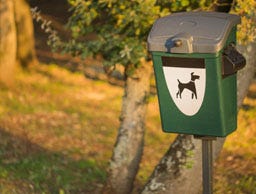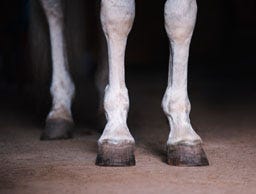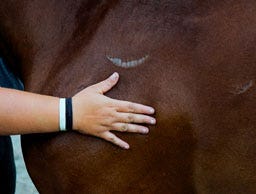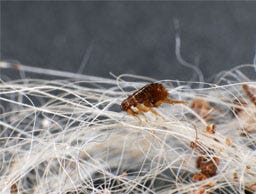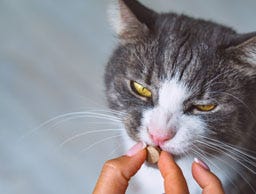Spring Fever in Dogs
The weather’s warmer, the days are bright, and your dog has an extra bounce in their step. It must be springtime! While we’re all excited by the changing seasons, you may notice your dog’s gotten an extra spring in their step, which might be causing some issues regarding their behaviour.
In this blog, we talk about spring fever in dogs and how the change of the seasons can affect your dog.
What is Spring Fever?
Spring fever is the term given to a number of health or behavioural changes that occur in springtime. Dog spring fever in particular, focuses on that little extra pep your dog might be experiencing and the behavioural issues that may follow.
In the winter months, many animals are more subdued by nature to conserve energy during harsh weather conditions and possibly food scarcity, even in our well-fed pets. It’s not unlike how some animals hibernate during the winter and return to themselves in the spring when things are more habitable.
When you begin taking your dog out around springtime, you may notice changes in their behaviour as they grow excited by all the new smells and activities they’re experiencing. Still, it’s not all rainbows and flowers for some owners.
Spring fever can mean your dog has more energy than usual, making them restless, easily bored and prompting any allergies they might have.
Symptoms of Spring Fever
A sudden rise in energy levels is the key sign of spring fever in dogs. You may notice them waking up earlier, becoming restless during the day, and creating havoc in the garden or on walks as they run, dig and sniff as much as possible.
Some of the other things you may notice include:
- Increased curiosity
- Prone to distractions
- Heightened excitement
- Ignoring commands
- Escaping gardens or through front doors
- Sneezing or coughing
- Itchy or inflamed skin
While some of these symptoms may not seem problematic, they can drastically affect your dog’s controllability, especially if they’re not properly trained. Seasonal allergies can also cause problems in your pet, which we discuss in our blog on dog hayfever below.
What Causes Spring Fever in Dogs?
The rise in excitement and energy levels in spring is mainly caused by the wealth of new smells our dogs are exposed to at this time of year. Farmers are letting their livestock back into the fields, often with their young, flowers are blooming, grass is growing back, pollen counts are higher, and more people are out and about.
All these things can cause increased excitement and distraction in your dog, making walking difficult or potentially disastrous if they’re not properly trained to be around livestock.
Higher pollen counts can also cause allergic reactions in dogs, causing itchy or inflamed skin as well as sneezing and coughing.
How to Manage Spring Fever in Dogs
If your dog is showing signs of spring fever, then it’s essential you find a way to manage their behaviour, especially if they’re easily excitable. Without proper training, your dog could try to escape, run into traffic, chase livestock and their young, or eat potentially toxic spring flowers.
Here are some steps you can take if your dog is experiencing spring fever to help keep them safe without restricting their time outside.
Prioritise Dog Training
This time of year is when it’s essential your dog listens to you. All the new distractions can make them very excited and prone to sniffing, eating, or rolling in things they shouldn’t. Make sure your dog’s recall is strong (especially if walking off-lead) as well as their ‘drop’ command in case they pick something up that they shouldn’t
If you’re walking your dog on the lead, make sure your ‘heel’ training is strong, else you might end up with a dog that pulls you every which way while walking, encouraging bad habits and potentially getting your dog into trouble with other owners or dogs.
Protect them from Parasites
Spending more time outdoors with your dog increases the risk of them picking up pesky parasites like fleas, ticks and worms. These bugs are more active in the summer months as they’re given lots of extra hiding places among grass and foliage, and more dog traffic means there’s a higher chance of your dog picking up what another has dropped.
Ensure you’re up to date with your dog’s routine flea and worming treatments so you can rest assured they’re protected while out frolicking.
Give Regular Baths
Higher pollen counts and temperamental weather conditions mean your dog will likely need more frequent baths, especially if they struggle with allergies. Make sure to give your dog a rinse-off after any walks to clean away any debris or pollen from their coat after walking to help prevent allergic reactions, or bathe them with a soothing dog shampoo to ease their symptoms.
Spring is also the time when most dogs shed… a lot. If your dog has a double coat, you’ll notice they’re shedding much more at this time of year as they prepare for summer. Stay on top of all that fluff by grooming your dog regularly with a brush or comb.
If you have a long-haired dog, you may notice they’re getting hot much quicker as the temperature rises. Give them a trim or book them in with a professional groomer every 8-12 weeks, depending on their coat.
Try New Things!
If your dog is excited about spring, why not give them something to use that pent-up energy on? Try introducing new toys for your dog to play with or extending their time on walks to allow them to explore all the new sights and smells spring brings. You can even let them go for a swim if the temperatures are warm enough!
Something as simple as walking your dog in a new location can be a great enrichment exercise for your dog as they can experience all the new smells without putting themselves at risk. Try walking in safe, livestock free fields so they can smell the flowers, or take them on walks with their doggy pals so they can play and experience it all together.
Spring can be a challenging time for all pet owners, but with the proper preparation and solutions, you can ensure your dog enjoys all the joys of spring without any risks. And with our great selection of spring essentials, you can be ready for anything!
This post is an opinion and should only be used as a guide. You should discuss any change to your pet’s care or lifestyle thoroughly with your vet before starting any program or treatment.












